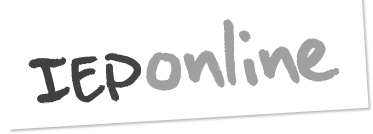Presentation example
Collaboration for Success: Individual Education Plans
This video series is a guide on how to present the Collaboration for Success (CFS) PowerPoint presentation to groups such as a school community or a child's IEP team.
« Go to What is in the guidelines?
Presenter notes
A short introduction of the two presenters begins this video, and the six parts of the video series follows.
You can watch the videos in sequence or separately.
All video clips are subtitled. You can be increase the size of the subtitles by using the scaling button (the four arrows next to the Vimeo logo).
A downloadable transcript (Word doc) of each video is also available.
You might like to use one or some of the video clips as part of your own presentation, for example Part 6 guides the audience around material on this website.
These video clips cannot be downloaded from this website.
If you require version for download, please contact the IEP Online team.
Introduction (0:48 min)
Meet Andrea Smart and Elisabeth Rix, the presenters of this presentation example.
Transcript - Introduction (Word 2007, 16 KB)
Part 1 | The IEP process (7:15 min)
In this video Andrea sets the scene on what recommendations were made by the 2010 IEP Literature Review to update the guidelines and who was involved in the advisory and consultation.
Activity A | What makes a successful IEP? (1:00 min)
Participants group together to discuss what a successful IEP might look like for their learners.
Transcript - Activity A What make a successful IEP (Word 2007, 21 KB)
Part 2 | Successful IEP process (5:45 mins)
Elisabeth explains what an IEP is and what an IEP isn't, when an IEP is necessary and shares some suggestions on how to make a successful process with collaboration at the heart of the matter.
Transcript - Part 2 Successful IEP process (Word 2007, 25 KB)
Part 3 | Working as a team with Activity B (6:10 mins)
Elisabeth explains who is involved, how the team is organised, and what does good collaboration bring to the IEP process. Activity B asks participants to suggest examples of adaptations and differentiations.
Transcript - Part 3 Working as a team (Word 2007, 29 KB)
Part 4 | In the classroom (1:20 mins)
Elisabeth explains adaptations to the environment and differentiations to the curriculum and what this means for the whole class.
Transcript - Part 4 In the classroom (Word 2007, 21 KB)
Part 5 | Where to from here? (1:30 mins)
Andrea talks about how to share the key messages with schools, the value of a shared understanding and developing a local plan. Activity C asks for suggestions on how this can be achieved.
Transcript - Part 5 Where to from here (Word 2007, 18 KB)
Part 6 | IEP Online (3:34 mins)
Andrea explains what information can be found on IEP Online, the accompanying website to the IEP guidelines, and shows facilitators where to find the Rollout Kit to get a copy of all the handouts mentioned during the presentation example.

